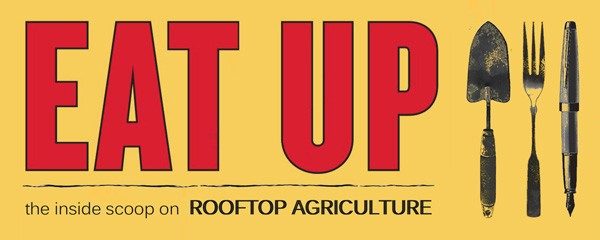boutique industry
Many of the pioneer rooftop farms sprinkled throughout the U.S. are much smaller than their rural counterparts. This scale differential begs the question of production volume. How can a rooftop farm that is less than an acre feed the masses? What purpose does a farm fulfill if not to produce as much food as possible? The truth is that rooftop farms of all sizes provide value not only in their ability to produce food, but also in their propensity to demonstrate what is possible.

Eagle Street Rooftop Farm chili peppers || Photo by Lauren Mandel
We are at the forefront of the rooftop agriculture movement in the U.S., which means that each and every skyline farm has the potential to lead by example, regardless of it’s size. High altitude farmers like Annie Novak from Brooklyn’s Eagle Street Rooftop Farm have begun sculpting this boutique industry, and the movement is picking up steam. As the message spreads and rooftop agriculture’s value is more thoroughly understood by the general public, the industry can blossom out of boutique-dom into something more essential.
Simply put, today’s boutique farmers will inspire the architects of tomorrow’s food system. They are the fuel for change, for progress.
The question then becomes how to spread the message of rooftop agriculture. How does a rooftop farmer with limited acreage reach as many people as possible? What is the most efficient way to grow a farm’s brand without physically expanding? The answer may lie in innovative marketing strategies. Several rooftop farms are delving into “value added” products. These are minimally processed goods such as jelly or hot sauce, which can be enjoyed over a prolonged period and may contain the rooftop farm’s brand.
Farm visitors also have the ability to spread the word by telling others about their experience. You can also talk about what you read, so go ahead and kick-start this revolution.
 EAT UP
EAT UP